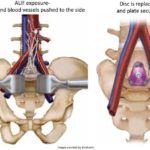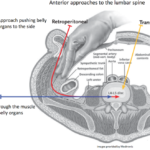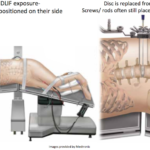 At Rocky Mountain Brain & Spine Institute, we focus on minimally invasive spine procedures. This was our formal training and how we perform nearly all our procedures. While most patients do not require fusion, lumbar fusions can be performed in a tubular minimally invasive fashion.
At Rocky Mountain Brain & Spine Institute, we focus on minimally invasive spine procedures. This was our formal training and how we perform nearly all our procedures. While most patients do not require fusion, lumbar fusions can be performed in a tubular minimally invasive fashion.
In the Denver region, few other surgeons perform tubular minimally invasive fusions. The reason for this is not completely known, however it most likely is due to few surgeons being trained in this technique. If a surgeon was not trained, the procedure can be challenging to learn and takes a while to become proficient. Tubular minimally invasive fusion leads to a small surgical scar, less disruption of tissues, less blood loss, shorter hospital stay, lower pain, lower complications, muscle preservation and less adjacent level disease compared to the standard open procedure.









